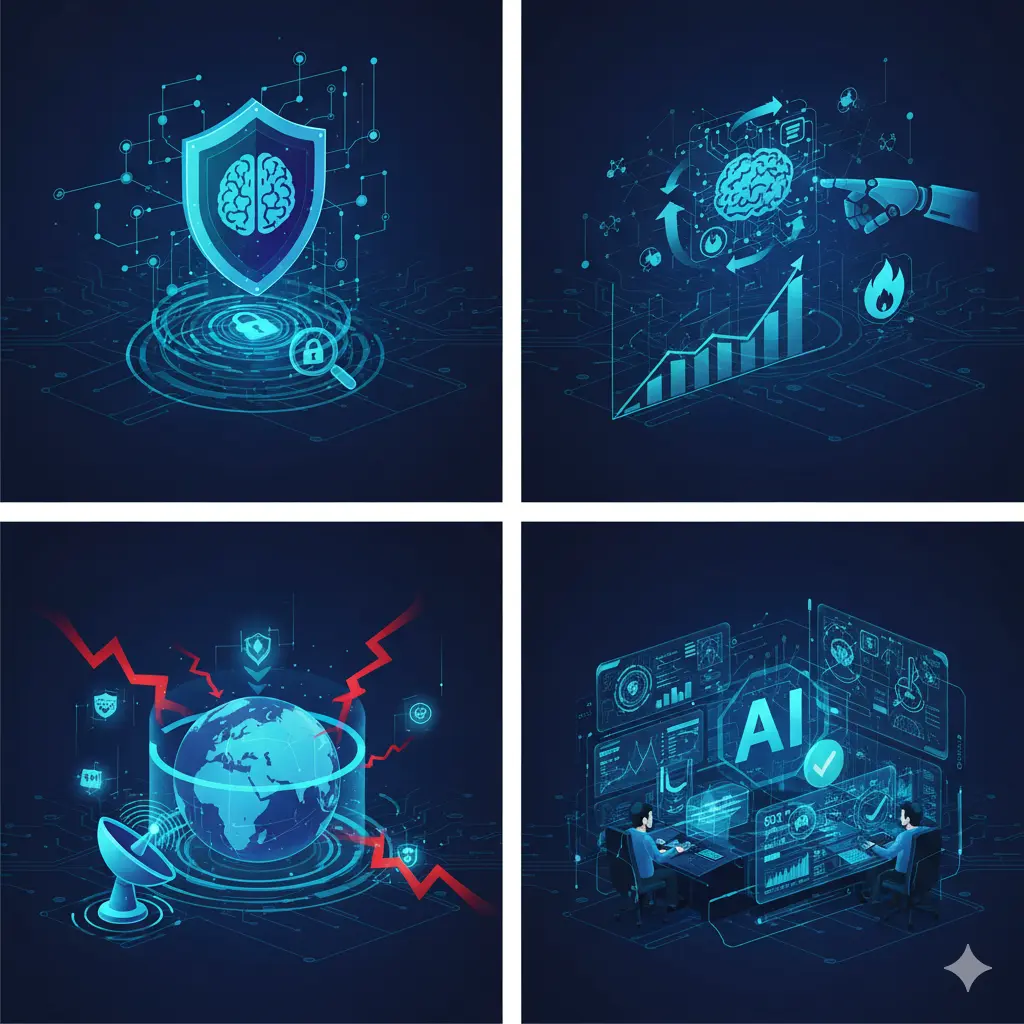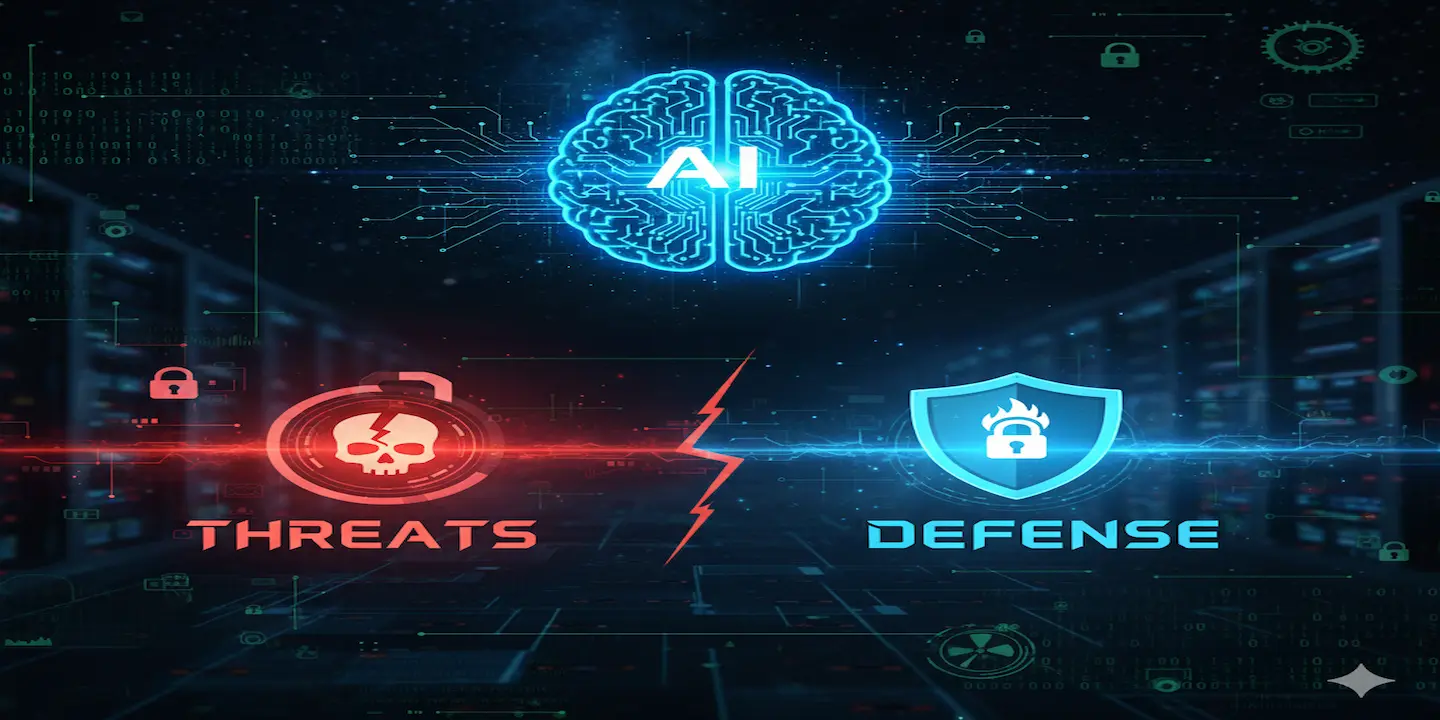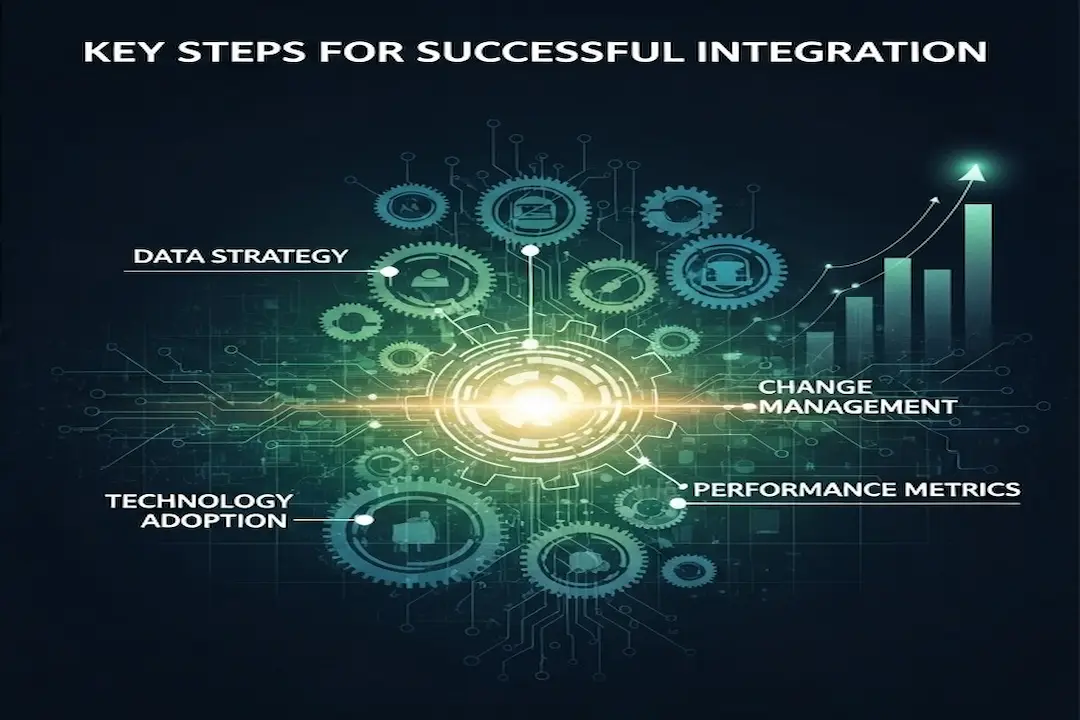
In an age defined by rapid technological leaps, Artificial Intelligence (AI) has emerged as a truly revolutionary force across almost every sector, and cybersecurity is certainly no exception. For small business owners navigating complex digital threats, marketing professionals keen on safeguarding customer data, and enterprise IT leaders protecting vast networks, understanding AI’s role is no longer optional, it’s essential. AI promises incredible capabilities in threat detection, automated responses, and predictive analytics, offering a powerful shield against ever-evolving cyber adversaries.
Yet, this isn’t simply a narrative of good overcoming evil. AI, like any potent innovation, is a double-edged sword. While it equips defenders with advanced tools, it simultaneously empowers cybercriminals, providing them with sophisticated means to craft more insidious attacks, bypass traditional security measures, and exploit vulnerabilities at scale. This dual nature of AI presents a unique challenge, compelling organizations to not only embrace AI for defense but also to anticipate and mitigate AI-driven attacks effectively.
Recently, an expert panel at Harvard Extension School underscored this critical dichotomy, highlighting that while AI offers immense potential for securing our digital future, it also heralds a new era of cyber threats that demand proactive strategies and robust governance. This article will delve into these insights, exploring how AI is redefining the cybersecurity landscape, both as a formidable ally and a potent weapon for those with malicious intent.
Table of Contents
- 1 Understanding AI in Cybersecurity
- 2 Key applications of AI in cybersecurity include:
- 3 The Dual Threat of AI
- 4 How Cybercriminals Exploit AI Technologies:
- 5 Key Insights from Cybersecurity Experts
- 6 AI and the Democratization of Cybercrime
- 7 Case Study Example: The Apex Solutions Ransomware Incident
- 8 Enhanced Cyberattack Techniques
- 9 Strategic AI Implementations for Defense
- 10 Strengthening Cyber Defenses with AI
- 11 Examples of AI tools analyzing multimodal data for predictive insights:
- 12 Governance and Risk Management
- 13 Importance of AI governance frameworks:
- 14 Strategies for assessing AI use and vendor interactions:
- 15 Proactive Defense Strategies
- 16 Conducting Threat Simulations
- 17 Importance of regular threat simulations:
- 18 Step-by-step guide on how to implement threat simulations effectively:
- 19 Conclusion
- 20 Final Thoughts
Understanding AI in Cybersecurity
What is AI in Cybersecurity?
At its core, AI in cybersecurity refers to applying machine learning, deep learning, natural language processing, and other AI techniques to identify, analyze, and combat cyber threats. Unlike traditional rule-based security systems, AI-powered solutions can learn from vast datasets, recognize complex patterns, and make intelligent decisions in real-time without explicit programming for every single scenario.
Key applications of AI in cybersecurity include:
- Threat Detection & Anomaly Recognition: AI systems can analyze network traffic, user behavior, and system logs to detect anomalies that may signal a cyberattack, often identifying threats that humans or traditional systems might overlook.
- Automated Incident Response: AI can automate repetitive security tasks, like quarantining infected files, blocking malicious IP addresses, or patching vulnerabilities, significantly reducing crucial response times.
- Predictive Analytics: By analyzing historical data and current threat landscapes, AI can predict potential future attack vectors and proactively recommend preventative measures.
- Malware Analysis: AI can rapidly analyze new and unknown malware samples, understanding their behavior and developing signatures for effective detection.
- Vulnerability Management: AI helps prioritize vulnerabilities based on their potential impact and exploitability, allowing IT teams to focus on the most critical risks.
For a marketing professional, this means more robust protection for sensitive customer data and marketing campaign integrity. For a small business owner, it translates to enterprise-grade security capabilities without needing a massive in-house security team. And for an IT decision-maker, it’s about optimizing resources while enhancing their overall security posture.
The Dual Threat of AI
The very capabilities that make AI an invaluable asset for defenders also make it a powerful weapon in the hands of cybercriminals. This “dual threat” is what keeps security experts awake at night.
AI as a Resource for Defenders:
Organizations leverage AI to enhance their security operations across the board. Imagine an AI system tirelessly monitoring millions of network events per second, correlating seemingly disparate indicators of compromise, and instantly flagging a sophisticated, zero-day attack that mimics legitimate user behavior. This is the power of AI in defense, its ability to process and interpret massive amounts of multimodal data (from network flows to endpoint logs to email content) for predictive insights, allowing security teams to act with unprecedented speed and precision. For instance, AI-driven Security Information and Event Management (SIEM) and Security Orchestration, Automation, and Response (SOAR) platforms can drastically cut down the time from detection to remediation, often reducing it from hours to mere minutes.
How Cybercriminals Exploit AI Technologies:
Conversely, attackers are rapidly adopting AI to elevate their illicit activities. They are using AI to:
- Generate Hyper-Realistic Phishing Attacks: AI can create highly personalized phishing emails, complete with convincing language, deepfake voice messages, and even video calls that mimic trusted individuals, making them incredibly difficult to discern from legitimate communications.
- Develop Sophisticated Malware: AI-powered tools can generate polymorphic malware that constantly changes its code signature, evading traditional signature-based detection systems. They can also create “zero-day” exploits by rapidly identifying vulnerabilities in software.
- Automate Reconnaissance and Exploitation: AI can automate the process of scanning networks for vulnerabilities, identifying valuable targets, and even executing multi-stage attacks without human intervention, dramatically increasing the scale and speed of attacks.
- Bypass CAPTCHAs and Authentication: AI can be used to solve CAPTCHAs, conduct credential stuffing attacks, and even develop sophisticated methods to bypass multi-factor authentication (MFA).
This arms race between AI for defense and AI for offense is escalating, making it imperative for every organization, regardless of size, to understand both sides of this technological coin.
Key Insights from Cybersecurity Experts
The rapidly evolving landscape of AI-driven cyber threats and defenses was a central theme at a recent expert panel convened by the Harvard Extension School. Leading cybersecurity strategists and technologists illuminated critical trends, emphasizing the urgency for proactive measures and informed decision-making.
AI and the Democratization of Cybercrime
One of the most concerning revelations from the panel was how AI is dramatically lowering the barrier to entry for cybercriminals. Previously, launching sophisticated attacks required specialized skills, extensive coding knowledge, and significant resources. Today, readily available AI tools and services often found on dark web forums or even legitimate AI platforms repurposed for malicious ends allow even novice attackers to orchestrate complex campaigns.
“AI has put the power of a nation-state hacking team into the hands of a script kiddie with a modest budget. This democratization of cybercrime means every organization, from the smallest startup to the largest enterprise, faces a heightened and more diverse threat landscape.”
Case Study Example: The Apex Solutions Ransomware Incident
Consider the fictional but highly plausible case of Apex Solutions, a mid-sized tech firm specializing in cloud infrastructure. In early 2023, Apex fell victim to a sophisticated ransomware attack that began with an AI-generated spear-phishing email. The email, meticulously crafted by an adversary using publicly available AI tools, mimicked a legitimate software update notification from a trusted vendor. It bypassed Apex’s spam filters due to its perfect grammar and context, and the embedded link led to a convincing, AI-generated fake login page.
One of Apex’s system administrators, overwhelmed by daily tasks, clicked the link and entered their credentials. Within hours, the attackers, leveraging AI-driven automation, moved laterally through Apex’s network, identified critical data repositories, and deployed advanced ransomware. The breach led to the encryption of core business data, operational paralysis for over two weeks, and ultimately, a reported loss exceeding $25 million due to remediation costs, lost revenue, and reputational damage. This incident tragically illustrates how AI empowers attackers to execute high-impact campaigns with startling efficiency and stealth.
The contrast between traditional and AI-driven cybercrime is stark:
| Feature | Traditional Cybercrime (Pre-AI) | AI-Driven Cybercrime (Current) |
|---|---|---|
| Skill Requirement | High; specialized coding, network knowledge | Low to Moderate; readily available AI tools and services |
| Attack Scale | Limited; manual execution, smaller targets | Massive; automated, large-scale campaigns, highly targeted |
| Sophistication | Signature-based malware, generic phishing | Polymorphic malware, deepfake phishing, adaptive attack strategies |
| Detection Evasion | Relies on obfuscation, basic evasion techniques | Constantly evolving, personalized attacks, mimicking legitimate behavior |
| Resource Investment | Significant time and expertise per attack | Reduced; AI automates many phases, making attacks cost-effective |
Enhanced Cyberattack Techniques
Beyond merely lowering the entry barrier, AI is significantly enhancing the efficacy and sophistication of cyberattack techniques. This translates to more elusive threats that bypass even advanced traditional defenses.
Panelists emphasized AI’s role in creating sophisticated phishing tactics. AI algorithms can analyze vast amounts of public data about individuals and organizations to craft highly personalized and convincing social engineering campaigns. This includes generating perfect email subject lines, crafting compelling narratives, and even simulating the communication style of specific individuals within an organization. For marketing professionals, this means an increased risk of brand impersonation and reputational damage. For IT decision-makers, it means the need for continuous employee training and advanced email gateway protection that utilizes AI for anomaly detection.
Furthermore, AI contributes to the development of automated malware. AI can analyze system vulnerabilities, generate malicious code tailored to specific environments, and even enable malware to adapt and learn from its surroundings to evade detection. This creates a moving target for security teams, demanding more dynamic and intelligent defense mechanisms.
A sobering statistic shared by one expert highlighted the expanding attack surface: “Over 60% of cyberattacks are now related to or initiated through third-party vendors.”
This statistic becomes even more alarming when considering AI’s role. Attackers can use AI to identify weakest links in a supply chain, automate the exploitation of known vulnerabilities in vendor software, or craft highly believable phishing attacks targeting employees of these third-party partners. This forces small business owners and enterprise IT leaders to scrutinize their entire digital ecosystem, not just their internal defenses.
Strategic AI Implementations for Defense
In the face of AI-powered threats, organizations must not merely react but strategically leverage AI to build robust, proactive defense mechanisms. This requires a balanced approach that combines cutting-edge technology with stringent governance.
Strengthening Cyber Defenses with AI
Organizations can significantly bolster their security posture by strategically deploying AI-powered solutions. These tools move beyond signature-based detection, offering capabilities that are essential for confronting adaptive, AI-driven threats.
Key ways organizations can use AI to bolster their security measures:

- Advanced Threat Detection: AI-driven Security Information and Event Management (SIEM) and Extended Detection and Response (XDR) platforms collect and analyze telemetry from across the entire IT environment endpoints, networks, cloud, email, and identity. AI algorithms identify subtle anomalies and patterns indicative of sophisticated attacks, often catching threats before they can fully propagate.
- Behavioral Analytics: AI can establish baselines for normal user and system behavior. Any deviation from these baselines, no matter how minor, triggers an alert. This is crucial for detecting insider threats, compromised accounts, and novel attack techniques that don’t rely on known malware signatures.
- Automated Vulnerability Management: AI can continuously scan for vulnerabilities, prioritize them based on real-world threat intelligence and potential impact, and even recommend or automate patching, ensuring that the most critical weaknesses are addressed swiftly.
- Security Orchestration, Automation, and Response (SOAR): AI-powered SOAR platforms automate repetitive security tasks, orchestrate complex workflows, and integrate various security tools. This dramatically speeds up incident response, reducing the time attackers have to inflict damage.
- Deception Technologies: AI can be used to deploy highly convincing decoys and honeypots designed to lure and entrap attackers. By observing attacker behavior in these controlled environments, organizations can gain valuable intelligence and refine their defenses without risking their actual production systems.
Examples of AI tools analyzing multimodal data for predictive insights:
Imagine an AI system that simultaneously processes:
- Network traffic: Identifying unusual data flows or communication patterns to command-and-control servers.
- User behavior analytics (UBA): Flagging an employee attempting to access sensitive files they rarely touch, or logging in from an unusual geographical location.
- Endpoint telemetry: Detecting suspicious process injection or privilege escalation attempts on a server.
- Threat intelligence feeds: Correlating observed indicators with newly reported global threats.
By synthesizing these disparate data points, AI can predict an imminent attack, not just react to an ongoing one. For example, it might detect a low-volume, slow-and-low data exfiltration attempt that would be invisible to traditional systems but, when combined with a user’s unusual login location, points to a compromised account and a highly targeted attack.
Here’s a snapshot of how leading AI-powered solutions are transforming defense:
| AI-Powered Solution | Primary Function | Key Benefits for Organizations |
|---|---|---|
| XDR (Extended Detection & Response) | Holistic threat detection across multiple security layers | Comprehensive visibility, faster detection, unified response |
| UEBA (User & Entity Behavior Analytics) | Identifies anomalous user/entity behavior | Detects insider threats, compromised accounts, novel attacks |
| AI-driven Firewalls & IDS/IPS | Real-time threat blocking, intelligent traffic analysis | Enhanced perimeter security, adaptive threat prevention |
| Phishing & Email Security | Detects advanced phishing, deepfakes, and business email compromise | Protects against social engineering, reduces human error risks |
| Vulnerability Prioritization | Ranks vulnerabilities based on exploitability and impact | Focuses resources on critical risks, improves patch management |
Governance and Risk Management
While adopting AI for defense is critical, it must be paired with robust governance and risk management frameworks. Without proper oversight, AI tools themselves can introduce new vulnerabilities, compliance issues, or ethical dilemmas.
Importance of AI governance frameworks:
For small businesses and large enterprises alike, establishing clear AI governance is non-negotiable. This means:
- Defining Ethical AI Use: Ensuring AI systems are fair, transparent, accountable, and do not perpetuate biases. This is particularly important for AI used in surveillance or employee monitoring.
- Data Privacy & Compliance: Adhering to regulations like GDPR, CCPA, and HIPAA when AI processes sensitive personal or proprietary data. Governance ensures data used for AI training is appropriately anonymized and secured.
- Accountability & Decision-Making: Establishing clear lines of responsibility for AI-driven decisions and ensuring there’s human oversight, especially in automated response systems.
- Risk Assessment: Regularly evaluating the security risks posed by AI models, including potential for adversarial attacks on the AI itself (e.g., poisoning training data).
Strategies for assessing AI use and vendor interactions:
- Due Diligence for AI Vendors: When selecting AI-powered security solutions, IT decision-makers must conduct thorough due diligence. This includes scrutinizing vendors’ security practices, data handling policies, AI model transparency, and incident response capabilities.
- AI Impact Assessments (AIAs): Before deploying any AI system, conduct an AIA to identify potential risks, biases, and legal implications. This mirrors the concept of a Privacy Impact Assessment (PIA).
- Continuous Monitoring of AI Models: AI models are not static. They need continuous monitoring for drift, performance degradation, and potential exploitation. Regularly audit and retrain models to ensure they remain effective and secure.
- Supply Chain Security for AI: Understand the provenance of AI models, libraries, and datasets. A compromised AI component in the supply chain can introduce critical vulnerabilities into your defense systems.
- Clear Policies and Procedures: Develop internal policies for the responsible acquisition, deployment, and management of AI technologies within the organization, communicating these clearly to all stakeholders, including marketing and sales teams who interact with customer data.
Proactive Defense Strategies
Beyond implementing AI-driven tools, a truly resilient cybersecurity posture demands proactive and continuous evaluation of defenses. The dynamic nature of AI-driven threats means that static security measures are simply not enough.
Conducting Threat Simulations
Regular threat simulations are vital for understanding your organization’s real-world security gaps and improving your response capabilities. They move beyond theoretical vulnerabilities to test how your people, processes, and technology perform under duress. For small business owners, this might feel daunting, but scaled-down versions are immensely valuable. For enterprise IT decision-makers, comprehensive simulations are non-negotiable.
Importance of regular threat simulations:
- Identify Weaknesses: Uncover vulnerabilities in your systems, applications, and human elements (e.g., susceptibility to phishing).
- Test Incident Response Plans: Evaluate the effectiveness of your existing incident response procedures and identify areas for improvement. Do your teams know what to do when an AI-driven attack bypasses your initial defenses?
- Improve Team Readiness: Train security teams, IT staff, and even general employees to recognize and respond to various attack scenarios.
- Validate Security Investments: Determine if your cybersecurity tools (including AI solutions) are performing as expected and delivering the intended protection.
- Stay Ahead of Adversaries: By simulating advanced attack techniques, including those powered by AI, organizations can proactively adapt their defenses.
Step-by-step guide on how to implement threat simulations effectively:
Whether you’re a small business with limited resources or a large enterprise, a structured approach is key.
- Define Scope and Objectives:
- Small Business: Focus on core assets. “Can an attacker compromise our primary customer database via an AI-driven email attack?”
- Enterprise: Encompass critical systems, cloud environments, and specific business units. “Can an AI-powered supply chain attack disrupt our manufacturing process?”
- Set clear, measurable goals (e.g., “reduce detection time by 20%”).
- Identify Resources:
- Internal Teams: Designate a “red team” (attackers) and a “blue team” (defenders). For smaller organizations, this might involve partnering with an external cybersecurity firm.
- Tools: Utilize penetration testing tools, vulnerability scanners, and even AI-powered attack simulation platforms.
- Plan the Attack Scenarios:
- Base scenarios on real-world threats, especially those involving AI (e.g., AI-generated phishing, automated credential stuffing, polymorphic malware deployment).
- Consider different attack vectors: external (web applications, email), internal (insider threat), supply chain.
- Execute the Simulation:
- The red team attempts to breach defenses using defined methods.
- The blue team (or your internal security operations) responds as they would to a real incident.
- Crucially, avoid notifying the blue team too much in advance to get a realistic assessment.
- Analyze and Report:
- Document every step of the simulation, including successful breaches, detection failures, and response times.
- Identify root causes for any weaknesses.
- Prepare a comprehensive report detailing findings, lessons learned, and actionable recommendations.
- Remediate and Re-test:
- Implement the recommended changes (e.g., patch vulnerabilities, update security policies, provide additional training).
- Schedule follow-up simulations to ensure that the remediated weaknesses are truly fixed.
By regularly putting your defenses to the test, you transform your cybersecurity posture from reactive to proactive, building resilience against the most sophisticated, AI-driven cyber threats.
Conclusion
The advent of Artificial Intelligence marks a watershed moment in cybersecurity, presenting both unparalleled opportunities for defense and formidable challenges from increasingly sophisticated cyber adversaries. As we’ve explored, AI is a double-edged sword: a powerful tool for organizations to detect, analyze, and respond to threats with unprecedented speed and precision, and simultaneously, a catalyst empowering cybercriminals to launch more cunning, automated, and scalable attacks.
For small business owners safeguarding their livelihoods, marketing professionals protecting their brand and customer trust, and enterprise IT decision-makers ensuring operational continuity, the message is clear: understanding and strategically leveraging AI is no longer a luxury but a fundamental requirement. The critical importance of refining cybersecurity strategies with AI cannot be overstated. This involves not only deploying advanced AI-powered defense tools but also establishing robust governance frameworks to ensure ethical use, manage risks, and maintain compliance.
Ultimately, navigating this new landscape demands a delicate balance. We must judiciously leverage AI for efficiency, predictive power, and automated responses, while simultaneously upholding strong foundational defenses, fostering continuous vigilance, and investing in human expertise. By embracing a proactive, AI-informed approach, organizations can transform potential vulnerabilities into resilient strengths, safeguarding their digital future in an era where AI is redefining the rules of engagement.
Final Thoughts
Protect your business before cyber threats strike. At Webologists, we help companies harness the power of AI-driven security strategies to safeguard sensitive data, strengthen defenses, and stay ahead of evolving attacks. Don’t wait for vulnerabilities to turn into costly breaches partner with us today to build a smarter, more resilient cybersecurity posture. Get in touch with our experts now and take the first step toward securing your digital future.
FAQs
-
Can small businesses afford AI-powered cybersecurity solutions?
Yes. Many modern AI-driven cybersecurity tools are available as cloud-based, scalable services. This allows small businesses to access enterprise-level protection without the high upfront costs, paying only for what they use.
-
How does AI improve phishing protection compared to traditional methods?
Unlike rule-based filters, AI analyzes patterns in email language, sender behavior, and user interactions. This helps detect highly convincing phishing attempts, including deepfake audio or video, that traditional spam filters often miss.
-
What industries benefit the most from AI in cybersecurity?
While every industry faces digital threats, sectors like finance, healthcare, e-commerce, and SaaS companies benefit the most. These industries handle sensitive data and are frequent targets of cybercriminals, making AI-driven protection crucial.
-
Can AI completely replace human cybersecurity experts?
No. AI enhances speed and accuracy in detecting and responding to threats, but human expertise is still vital for strategy, ethical decisions, and handling complex scenarios that AI cannot fully interpret. The best results come from human-AI collaboration.




